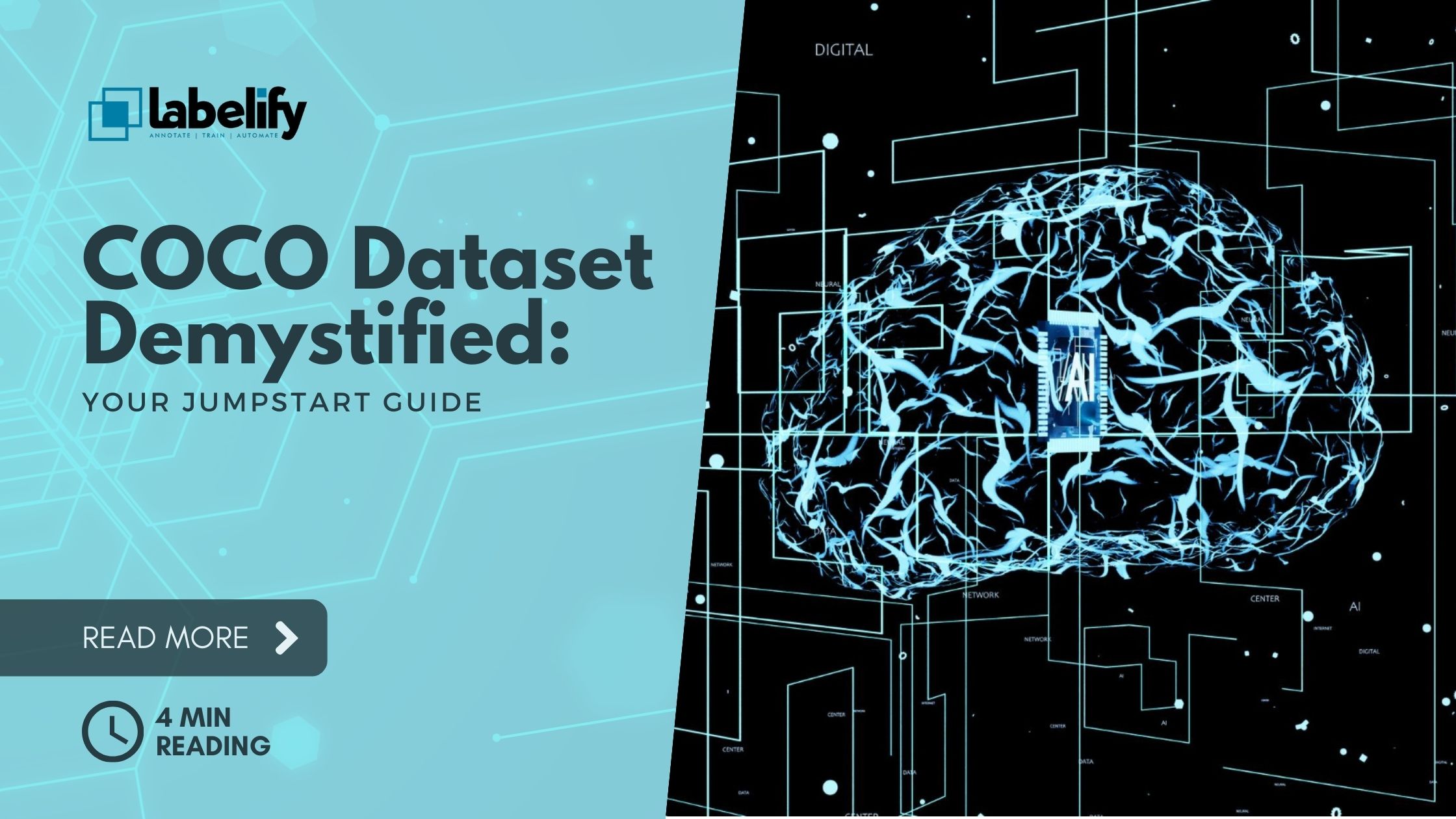The COCO dataset, a comprehensive collection of over 330,000 meticulously annotated images, has emerged as a vital resource for computer vision research and development.
With its precise object categories and descriptive captions, this dataset serves as a cornerstone for training and evaluating cutting-edge models in tasks such as object detection, segmentation, and captioning.
Despite potential biases, the COCO dataset remains an indispensable tool for advancing the field of computer vision and empowering researchers and practitioners in their quest for innovative solutions.
Key Takeaways
- The COCO dataset is a large-scale image recognition dataset for object detection, segmentation, and captioning tasks.
- It contains over 330,000 images, each annotated with 80 object categories and 5 captions describing the scene.
- The dataset is widely used in computer vision research and has been used to train and evaluate many state-of-the-art models.
- The COCO dataset serves as a baseline for training, testing, finetuning, and optimizing computer vision models.
Overview of the COCO Dataset
Frequently used in computer vision research, the COCO dataset is a large-scale image recognition dataset for object detection, segmentation, and captioning tasks. With over 330,000 annotated images, it serves as a valuable resource for training and evaluating state-of-the-art models.
The dataset is organized into a hierarchy of directories, including separate sets for training, validation, and testing. Annotations are provided in JSON format, containing information such as image file name, size, object class, bounding box coordinates, segmentation mask, and captions.
However, training models with the COCO dataset comes with its challenges. The dataset suffers from inherent bias due to class imbalance, which can impact the performance of machine learning models.
Exploring the COCO dataset structure and understanding these challenges is crucial for effectively training models and achieving accurate results.
COCO Dataset Classes
The COCO dataset offers a comprehensive collection of object categories, including both things and stuff classes, making it a valuable resource for various computer vision tasks.
The things classes encompass objects such as animals, vehicles, and household items, while the stuff classes consist of background or environmental items like sky, water, and road.
The dataset provides annotations for object detection, stuff image segmentation, panoptic segmentation, dense pose, and keypoint annotations.
However, the COCO dataset suffers from inherent bias due to class imbalance, which can impact the training and evaluation of machine learning models.
It is important to analyze this class imbalance to ensure fair and accurate performance of models trained on the COCO dataset.
Usage of the COCO Dataset
One common use of the COCO dataset is as a baseline for training and evaluating computer vision models. The dataset provides a diverse range of images and annotations, making it suitable for various tasks such as object detection, instance segmentation, and semantic segmentation.
Here are four key aspects of the COCO dataset's usage:
- Bias in the COCO dataset: Researchers have highlighted the presence of bias in the COCO dataset, particularly in terms of class imbalance. This bias can impact the performance of machine learning models trained on the dataset, leading to skewed results.
- Techniques for data augmentation with the COCO dataset: To mitigate bias and improve model generalization, data augmentation techniques can be employed. These techniques involve transforming the dataset by applying operations such as rotation, scaling, and flipping. Augmenting the COCO dataset can help address class imbalance and enhance model performance.
- Training computer vision models: The COCO dataset serves as a valuable resource for training and fine-tuning computer vision models. Researchers can leverage the dataset's annotations to develop models capable of accurately detecting and classifying objects in images.
- Evaluating computer vision models: The COCO dataset also enables researchers to evaluate the performance of their computer vision models. By comparing the model's predictions against the ground truth annotations provided in the dataset, researchers can assess the model's accuracy, precision, and recall.
Object Detection With the COCO Dataset
To what extent can the COCO dataset be utilized for object detection in computer vision models?
The COCO dataset is a valuable resource for training object detection models. It provides bounding box annotations for 80 different object categories, making it suitable for training models to detect and classify objects in images.
One popular model that has been trained and evaluated on the COCO dataset is YOLO v3. YOLO v3 is known for its fast and accurate object detection capabilities, making it a popular choice for researchers and developers.
Another model that can be used for object detection is Faster R-CNN, which is known for its high accuracy but slower inference speed compared to YOLO v3.
Instance Segmentation With the COCO Dataset
Instance segmentation, a crucial task in computer vision, can be effectively performed using the comprehensive annotations provided by the COCO dataset. This dataset offers valuable resources for training models for instance segmentation tasks.
Here are four key points about instance segmentation techniques in computer vision and applications of instance segmentation using the COCO dataset:
- Object Identification: Instance segmentation allows for the identification and separation of individual objects within an image, providing a unique label for each instance.
- Precise Object Boundaries: By utilizing the COCO dataset's segmentation mask annotations, instance segmentation models can accurately segment objects at a pixel level, resulting in precise boundaries.
- Object Tracking: The COCO dataset's annotations enable instance segmentation models to track objects across frames, making it useful for tasks such as video analysis and surveillance.
- Real-World Applications: Instance segmentation using the COCO dataset has various practical applications, including autonomous driving, robotics, medical imaging, and object recognition in complex scenes.
Training Models With the COCO Dataset
When training models with the COCO Dataset, it is important to utilize the comprehensive annotations and diverse image categories provided. To achieve optimal results, various training techniques can be employed, such as transfer learning, data augmentation, and fine-tuning.
Transfer learning allows models to leverage pre-trained weights from other datasets, enhancing their ability to generalize and learn from the COCO Dataset. Data augmentation techniques, such as rotation, scaling, and flipping, can be applied to increase the diversity of the training data and improve model performance.
Additionally, fine-tuning can be used to adapt pre-trained models to the specific task of object detection or instance segmentation using the COCO Dataset. To evaluate the performance of trained models, evaluation metrics like mean Average Precision (mAP) and Intersection over Union (IoU) can be used to measure accuracy and overlap between predicted and ground truth bounding boxes.
Frequently Asked Questions
How Is the COCO Dataset Annotated for Object Detection Tasks?
The COCO dataset is annotated for object detection tasks by providing bounding box coordinates and class labels for each object in the image. This annotation process involves manually drawing rectangles around objects and labeling them with their corresponding categories.
The dataset also includes additional information such as segmentation masks, which provide pixel-level annotations for each object. These annotations serve as ground truth data for training and evaluating object detection models.
The COCO dataset is widely used in the computer vision community and has contributed to the development of state-of-the-art object detection algorithms.
Are There Any Limitations or Challenges Associated With Using the COCO Dataset for Training Computer Vision Models?
There are several limitations and challenges associated with using the COCO dataset for training computer vision models.
One limitation is the inherent bias in the dataset due to class imbalance, which can affect the performance of the models.
Additionally, the dataset may not cover all possible object categories or capture diverse real-world scenarios, leading to reduced generalization capabilities.
Another challenge is the large size of the dataset, which requires significant computational resources and time for training and evaluation.
Can the COCO Dataset Be Used for Tasks Other Than Object Detection and Instance Segmentation?
The COCO dataset can be used for tasks other than object detection and instance segmentation. It can also be leveraged for tasks such as image captioning, keypoint estimation, and panoptic segmentation.
Models trained on the COCO dataset can be evaluated for their performance on these tasks, providing valuable insights into their capabilities and limitations.
This versatility of the COCO dataset makes it a valuable resource for training and evaluating computer vision models for a wide range of applications.
Are There Any Pre-Trained Models Available That Have Been Trained on the COCO Dataset?
Yes, there are numerous pre-trained models available that have been trained on the COCO dataset.
These models have achieved high levels of accuracy in object detection and instance segmentation tasks.
They serve as a valuable resource for researchers and practitioners looking to leverage the COCO dataset for their own applications.
How Can the COCO Dataset Be Accessed and Downloaded for Use in Research or Applications?
Accessing and downloading the COCO dataset for research or applications is a straightforward process. The dataset can be accessed through the official COCO website or other online platforms that host the dataset.
To download the dataset, users can navigate to the download section on the website and select the desired data splits (train, validation, or test). The dataset can be downloaded in various formats, such as images, annotations, or preprocessed datasets, depending on the specific requirements of the research or application.
Conclusion
In conclusion, the COCO dataset is an invaluable resource for computer vision research, providing a vast collection of annotated images for various tasks. Its hierarchical organization, extensive annotations, and inclusion of different types of annotations make it a comprehensive dataset for training and evaluating cutting-edge models.
While inherent biases exist, the COCO dataset remains a fundamental tool for advancing computer vision algorithms and techniques, particularly in object detection, instance segmentation, and semantic segmentation.




